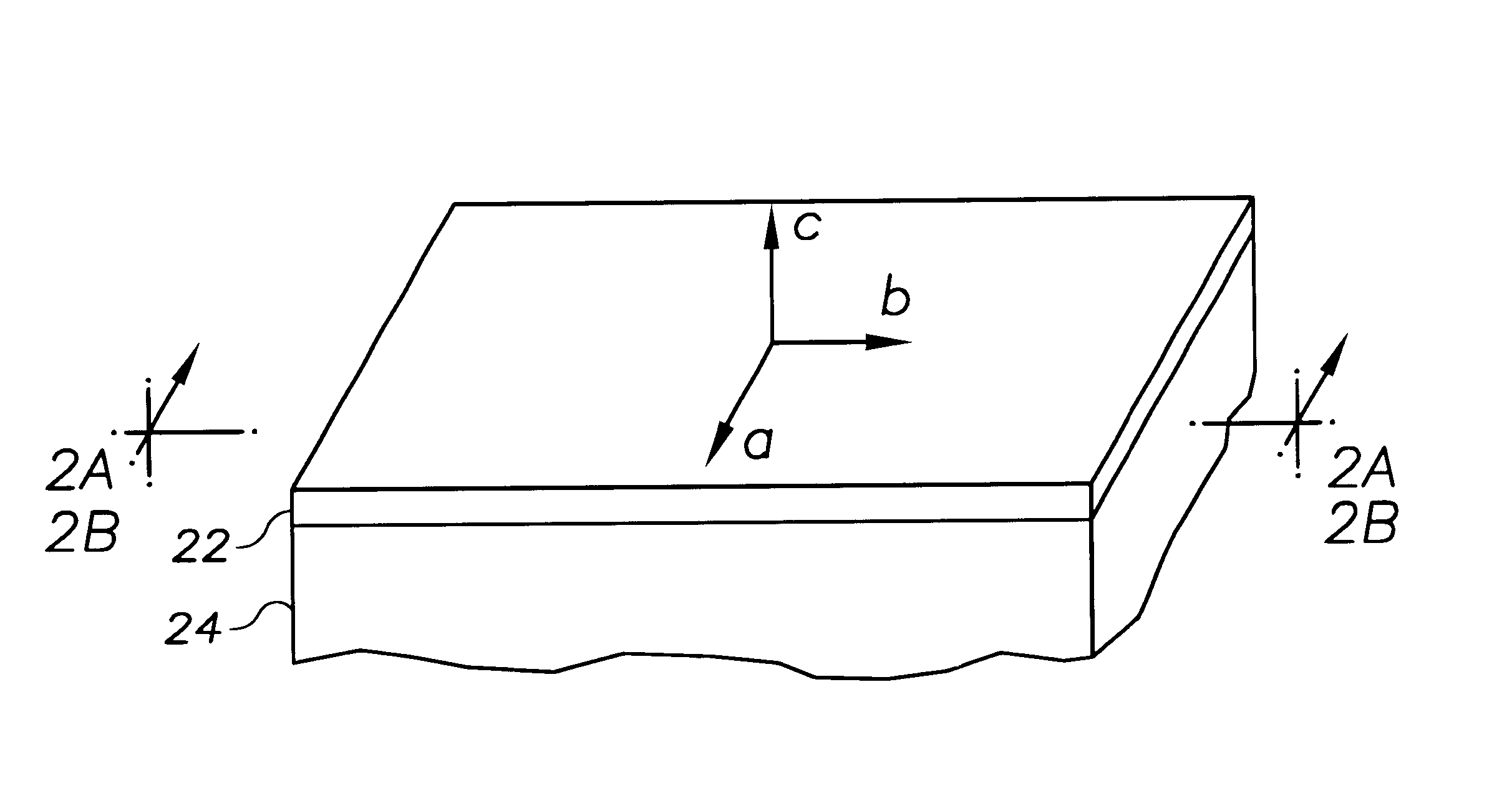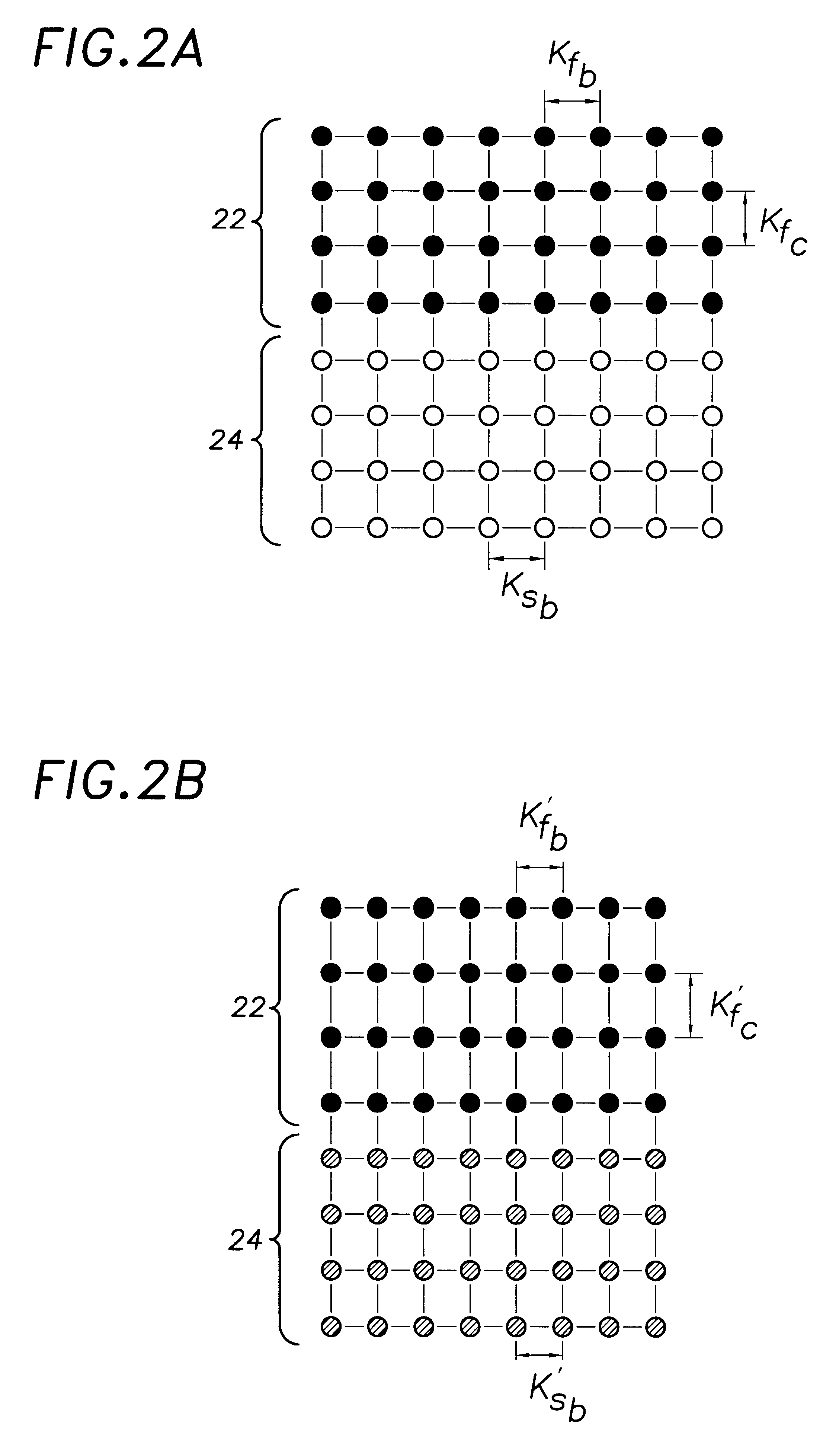Method of increasing the critical temperature of a high critical temperature superconducting film and a superconducting structure made using the method
a superconducting film and critical temperature technology, applied in the field of superconductors, can solve the problems of expensive, and limited to use applications of hts films, and not being suitable for practical applications
- Summary
- Abstract
- Description
- Claims
- Application Information
AI Technical Summary
Problems solved by technology
Method used
Image
Examples
Embodiment Construction
Referring now to the drawings, wherein like elements are indicated by like numerals, there is illustrated in FIG. 3 in accordance with the present invention an exemplary superconductor structure, which is denoted generally by the numeral 100. Superconductor structure 100 may be used to form any number of superconducting devices, such as superconducting tape / wire, microwave filters, superconducting quantum interference devices (SQUIDS), optical modulators, broadband detectors (Bolometers), high-speed electronic Josephson junctions and rapid single flux quantum (RSFQ) logic, among others.
Superconductor structure 100 includes a substrate 102 and an HTS film 104 grown on the substrate. HTS film 104 may comprise of any one of a number of superconducting materials, such as copper oxide compounds comprising yttrium, bismuth, thallium, lanthanum or mercury. As used herein and in the claims appended hereto, the term "substrate" denotes the entirety of the structure on which HTS film 104 is g...
PUM
 Login to View More
Login to View More Abstract
Description
Claims
Application Information
 Login to View More
Login to View More - R&D
- Intellectual Property
- Life Sciences
- Materials
- Tech Scout
- Unparalleled Data Quality
- Higher Quality Content
- 60% Fewer Hallucinations
Browse by: Latest US Patents, China's latest patents, Technical Efficacy Thesaurus, Application Domain, Technology Topic, Popular Technical Reports.
© 2025 PatSnap. All rights reserved.Legal|Privacy policy|Modern Slavery Act Transparency Statement|Sitemap|About US| Contact US: help@patsnap.com



